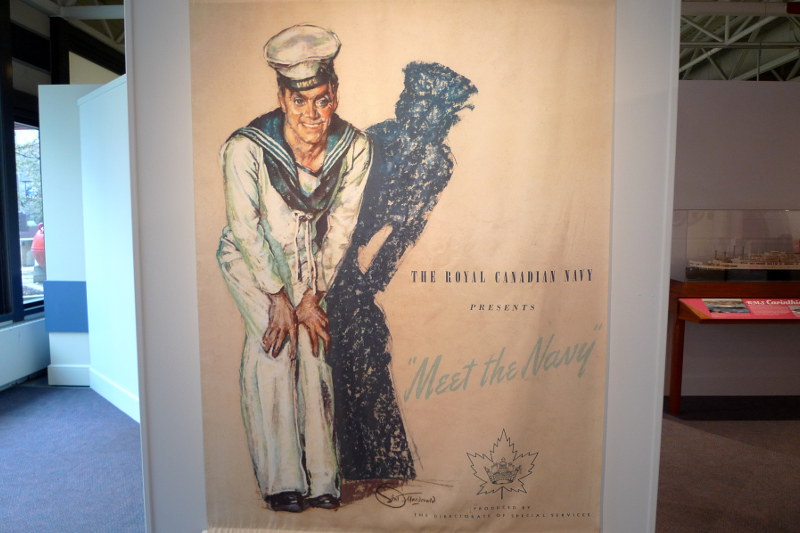Many many many years ago, Rosie O’Donnell dubbed Halifax a gay friendly destination. Colourful “alternative lifestyle” shops line the streets around the harbour and stories are plenty for anyone wanting to listen.
The Maritime Museum on the harbour’s edge pays it’s own homage to the gay men and women of the Navy in their Meet the Navy exhibit. Quotes below come directly from walls throughout the display.
Accommodations
“Many gay men had not been able to come out at home, even in their own bedrooms. Their cabin was often the first place where they could express themselves through decor and furnishings. Usually, gay stewards roomed together, six to a cabin. These cabins were often nicknamed Balmoral (because the real Balmoral in Scotland was the home of the Queen Mother)…”
Foreign Ports
“Traditionally, when seafarers arrived in a distant port, finding sex and alcohol were high on their agenda. Gay people also learned how different cultures handled homosexuality. For example, the Middle East taught them that homosexuality could be accepted and not shut out. The first time in a new port, gay crew went sightseeing like other tourists. On later trips, many went cruising, looking for partners. If ports had gay bars, clubs, and bathhouses, they enjoyed these but often they found there was no gay scene.”
Below are some items gathered by one sailor during various shore visits.
Another item that I found fascinating (but didn’t photograph) was detailed hand-drawn maps of the gay-friendly areas around ports. These maps and knowledge were often handed from sailor to sailor to help them navigate the often difficult to find “gay-friendly” areas in various cities.
Personal Accounts
“Gay seafarers often experienced culture shock when they returned to grey and homophobic homeports after months of living in their gay heaven. “It was back into the closet” or into their old marriage. Some found they still couldn’t come out to their families. They became depressed, even suicidal, at the double life they led. Others found their wives accepted their behaviour.”
It’s the personal accounts given throughout the exhibit that make it interesting. Below is that of Frank and Helen.
“When Frank and Helen went to sea in the 1960s and 70s, they had to hide their sexual orientation to keep their jobs. In more recent times, Billy, Chris, and Bryson have been open about being gay. Surprisingly, this did little to change their identity or interaction aboard as the demand for crew unity in running a ship forced other identities to become secondary. They considered themselves “sailors first” in what has remained a very masculine environment.
For Helen, being a lesbian was less important than the challenges of being a woman in an aggressively male-dominated workplace. Often to their surprise, the majority of their shipmates accepted them as being gay. Sometimes, there was sincere but clumsy recognition by their heterosexual crewmates.
“In the 1960s, Frank was shocked to discover during an informal drink with his men that they knew he was gay but didn’t care.”
